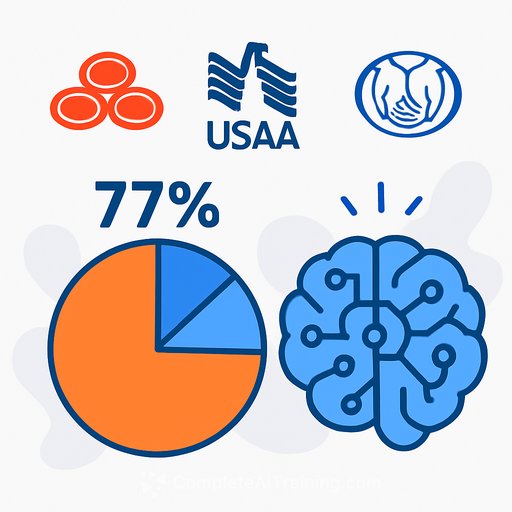Insuring Intellectual Property – Examining AI and Fair Use
The number of lawsuits involving AI technologies is growing steadily. Recent cases targeting companies for alleged misuse of copyrighted materials in training AI models highlight the importance of intellectual property (IP) insurance. These policies can help cover risks tied to copyright infringement claims.
A recent ruling by a California federal district court shed light on the fair use defense in AI training. The court found that using copyrighted books to train large language models (LLMs) can qualify as fair use. However, the same court also ruled that the unauthorized possession of over seven million pirated books downloaded freely from the internet was copyright infringement regardless of their use in training.
When books were legitimately purchased and then digitized for training, the court deemed this use permissible fair use. This case underscores the fine line between lawful and infringing use of copyrighted training data. It also emphasizes why companies involved in handling copyrighted works should secure IP insurance that responds effectively to infringement claims.
Factual Background
Anthropic PBC, an AI company, developed its AI software Claude by creating a digital "central library" of copyrighted works. Some books were purchased legally, while others were pirated from the internet. Anthropic intended to keep this library indefinitely, regardless of whether specific books were used for training.
Three authors filed a class action, alleging copyright infringement due to unauthorized copying and use of their books. They argued the company used the works both to build its comprehensive library and to train LLMs by selecting and refining subsets over time.
Anthropic sought summary judgment claiming its use was fair use. The court ruled in favor of Anthropic regarding training of LLMs, but denied summary judgment on the use of pirated copies. The unauthorized downloading and retention of pirated books posed a trial-worthy issue.
The Court’s Fair Use Analysis
The court distinguished between two uses of copyrighted books: creating the digital library and training LLMs. It also differentiated between pirated copies and legitimately purchased physical books digitized for training.
Section 107 of the Copyright Act outlines four factors for fair use evaluation:
- The purpose and character of the use;
- The nature of the copyrighted work;
- The amount and substantiality of the portion used;
- The effect of the use on the potential market or value of the work.
1. Purpose and Character of the Use
The court looked at whether the use was transformative and whether it was commercial. Transformative uses add new meaning or expression, while non-commercial uses are more likely to be fair. In this case, building and indefinitely retaining a virtual library of pirated books was not transformative. Anthropic did not pay for these copies and kept them regardless of usefulness, which weighed against fair use.
2. Nature of the Copyrighted Work
The court considered the creative nature of the works. Books with expressive content are less likely to be fairly used than factual works. The court accepted that Anthropic selected books for their expressive qualities, which weighed against fair use for both printed and pirated copies.
3. Amount and Substantiality of the Portion Used
Copying large portions or entire works typically weighs against fair use. Anthropic's retention of pirated copies—even those not used for training—suggested other uses and counted against fair use.
4. Effect on the Market
The court assessed whether the use harmed the market for the original works. It found that pirated copies displaced market demand, threatening the publishing industry. This factor strongly weighed against fair use for the pirated copies forming the digital library.
Implications for Insurance Professionals
The Bartz case illustrates how IP infringement claims are becoming more frequent, especially with AI development. IP insurance can cover defense costs and settlements related to copyright or trademark infringement claims.
IP insurance typically includes:
- Infringement Defense Coverage: Covers legal defense in infringement lawsuits, like the case against Anthropic.
- Abatement Enforcement Coverage: Covers costs to pursue legal action against infringers.
- Patent Infringement Protections: Available in some policies.
Businesses that often benefit from IP insurance include:
- Tech Startups: Companies creating software or technology products face third-party infringement risks and should consider IP coverage.
- Entertainment and Media: Film, music, and creative industries benefit from protection against infringement claims.
- Consumer Products Manufacturers: Those designing and selling retail products should secure IP insurance to tackle counterfeiters and competitors.
Key Takeaways for Policyholders
IP insurance is crucial for companies facing infringement claims or needing to enforce their IP rights. Coverage can include legal fees, settlements, and judgments.
Policyholders should carefully review their insurance policies as coverage for IP-related claims varies widely. Traditional liability policies may exclude IP exposures, while specialized IP insurance products differ in scope.
Companies involved in creating or using IP must assess their insurance to avoid gaps. Even businesses without direct IP ownership can face infringement allegations in manufacturing, distribution, or retail.
Consulting with coverage counsel and risk experts is essential to ensure adequate protection against IP disputes.
For professionals interested in broadening their knowledge on AI and related risks, exploring specialized courses can be valuable. Resources like Complete AI Training’s latest AI courses offer focused learning paths that can inform better risk assessment and insurance strategies.
Your membership also unlocks:






